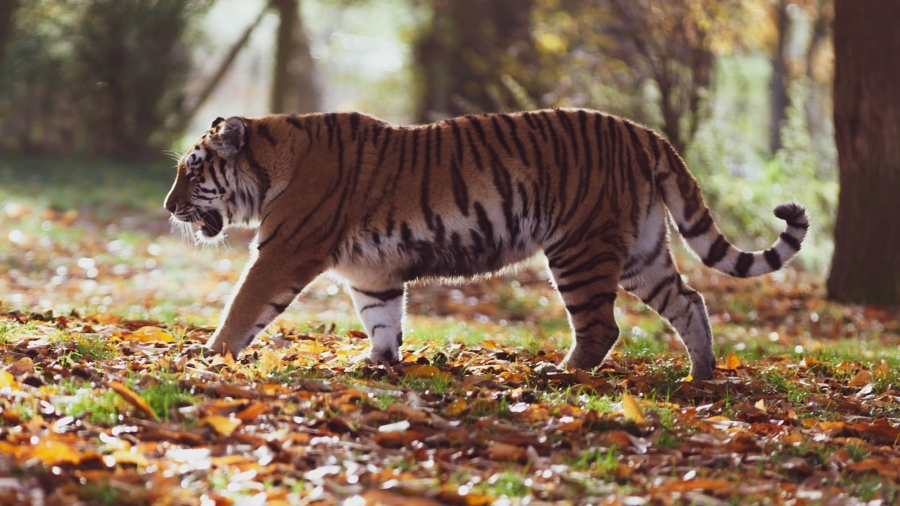Wildlife photography is a thrilling and challenging pursuit that combines the beauty of nature with the art of photography. Capturing animals in their natural habitat requires patience, skill, and the right equipment. In this comprehensive guide, we will explore the essential tips, techniques, and gear needed to excel in wildlife photography. Whether you are a beginner or an experienced photographer, this guide will help you take your wildlife photography to the next level.
Table of Contents
Understanding Wildlife Photography
Wildlife photography is more than just taking pictures of animals; it’s about telling a story through your images. It requires an understanding of animal behavior, the ability to anticipate their movements, and the skill to capture those fleeting moments that tell a powerful story. Here are some key elements to consider:
- Patience and Persistence: Wildlife photography often involves long hours of waiting for the perfect shot. Patience is crucial as animals are unpredictable and may not always appear when you want them to.
- Knowledge of Animal Behavior: Understanding the habits and behaviors of the animals you are photographing can help you anticipate their movements and capture more compelling images.
- Ethical Considerations: Always prioritize the well-being of the animals and their habitat. Avoid disturbing them or altering their environment for the sake of a photograph.
Essential Gear for Wildlife Photography
Having the right gear is essential for capturing stunning wildlife photographs. Here’s a list of must-have equipment:
- Camera: A DSLR or mirrorless camera with a high frame rate and good low-light performance is ideal. Look for cameras with fast autofocus systems and high burst rates.
- Lenses: Telephoto lenses are essential for wildlife photography. A lens with a focal length of at least 300mm will allow you to capture distant subjects. Consider lenses with image stabilization to reduce camera shake.
- Tripod: A sturdy tripod is crucial for stabilizing your camera, especially when using long lenses. It helps to reduce blurriness and allows for sharper images.
- Memory Cards and Batteries: Always carry extra memory cards and batteries. Wildlife photography sessions can be long, and you don’t want to miss a shot because of a full card or dead battery.
- Protective Gear: Protect your equipment from the elements with rain covers and lens hoods. Also, consider wearing camouflage clothing to blend into your surroundings.
Techniques for Capturing Stunning Wildlife Photos
- Use the Right Settings: Shooting in manual mode gives you full control over your camera settings. Use a fast shutter speed to freeze motion, a wide aperture for a shallow depth of field, and adjust the ISO based on the lighting conditions.
- Focus on the Eyes: The eyes are the most expressive part of an animal. Make sure they are in sharp focus to create a strong connection with the viewer.
- Shoot in Burst Mode: Wildlife can be unpredictable. Shooting in burst mode allows you to capture a series of images in quick succession, increasing your chances of getting the perfect shot.
- Experiment with Composition: Use the rule of thirds, leading lines, and framing to create dynamic compositions. Don’t be afraid to experiment with different angles and perspectives.
- Be Ready for Action: Wildlife moments are fleeting. Keep your camera ready with the appropriate settings, and be prepared to react quickly to capture the action.
Post-Processing Tips
Post-processing is an important part of wildlife photography. Here are some tips to enhance your images:
- Adjust Exposure and Contrast: Fine-tune the exposure and contrast to bring out details in your images. Use tools like levels and curves for precise adjustments.
- Sharpen Your Images: Apply sharpening selectively to enhance the details in your photos. Be careful not to over-sharpen, as it can introduce noise.
- Crop for Better Composition: Cropping can help improve the composition of your images. Focus on the subject and eliminate any distracting elements.
- Use Noise Reduction: Shooting in low light can introduce noise. Use noise reduction tools to clean up your images without losing detail.
FAQs About Wildlife Photography
Q1: What is the best time of day for wildlife photography?
A1: The best time for wildlife photography is during the golden hours, which are early morning and late afternoon. The soft, warm light during these times creates beautiful, natural lighting for your photos.
Q2: How can I get close to wildlife without disturbing them?
A2: Use long telephoto lenses to photograph animals from a distance. Move slowly and quietly, and use natural cover to hide your presence. Always respect the animals’ space and avoid any actions that could cause stress or harm.
Q3: What settings should I use for wildlife photography?
A3: Use a fast shutter speed (1/1000s or faster) to freeze motion, a wide aperture (f/2.8 to f/5.6) for a shallow depth of field, and adjust the ISO based on the lighting conditions. Shooting in manual mode gives you the most control.
Q4: How can I improve my wildlife photography skills?
A4: Practice regularly, study animal behavior, and learn from other photographers. Join wildlife photography workshops or groups to gain experience and feedback. Continuously experiment with different techniques and compositions.
Q5: What should I do if an animal approaches me while I’m photographing?
A5: Stay calm and avoid sudden movements. Slowly back away while keeping an eye on the animal. Never run or turn your back. If you feel threatened, make yourself appear larger and make noise to scare the animal away.
Conclusion
Wildlife photography is a rewarding and exhilarating hobby that allows you to connect with nature and capture its beauty. With the right gear, techniques, and a deep respect for wildlife, you can create stunning images that tell powerful stories. Remember to practice patience, respect the animals and their habitats, and continuously strive to improve your skills. Happy shooting!


[…] best nature photos often come from being in the right place at the right time. Wildlife is usually more active during early mornings and late afternoons. For landscapes, timing can vary […]